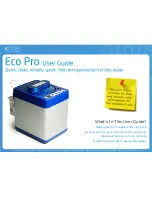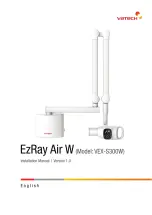
ROUTING
Examples of possible message routing paths between Expander # 2 and the central node can be as the following:
-
Certain possible routes will not be used depending on the radio visibility of certain intermediate network / node devices.
-
Routes normally use both channels of the system
’
s channel pair. In case one of the channels is disturbed the route can withstand
using only one of the channel pair.
-
Messages are sent through routes in either direction.
-
The user cannot establish routes directly in any way.
-
The user cannot have a graphic schematic overview of the discovered route system (this is possible through
TauREX
software, though).
-
The user cannot disable selected segments of automatically discovered routes (this is possible only through
TauREX
software, though).
CHILD DEVICES LINKING
Child device
’
s linking is the action of bonding a detector, call point, sounder, etc. to a parent network device (
FI750/RF/W2W
,
FI750/RF/CWE
,
FI750/RF/WE
).
A child device will communicate exclusively with its assigned parent network device.
A child and its parent device have in common one field channel pair (two wireless channels).
Through the keyboard
-
display user interface you can link:
-
one single child device;
“
Link by switch
”
linking mode is triggered directly by the user through the child device
’
s onboard switch.
-
One or more child devices;
“
Wakeup link
”
linking mode is triggered by the user through the central node
’
s keyboard
-
display. Every link
operation is triggered for every child device by acting on the central node
’
s user interface.
LINK BY SWITCH
You can link one single child device, individually.
You make the system search for the child device, then you manually trigger linking by using the switch mounted on the child device.
WAKEUP LINK
Child devices are all set manually in a particular state through their onboard switch; their unique identification code has been memorized,
manually, in the central node memory; linking is triggered, manually, from the keyboard
-
display of the central node for each child device.
On all child devices, you act on the switch only at the beginning of the operation.
Picture 3
Exp # 4
Exp # 3
Exp # 2
Exp # 1
Central
Exp # 4
Exp # 3
Exp # 2
Exp # 1
Central
Exp # 4
Exp # 3
Exp # 2
Exp # 1
Central
System and devices setting and management
is only possible from the central node of the
Taurus system (
FI750/RF/W2W
,
FI750/RF/CWE
).
You can use
FI750/RF/WE
's user interface
only for local diagnostic purposes and for
setting the device in "Discovery mode".
4





































